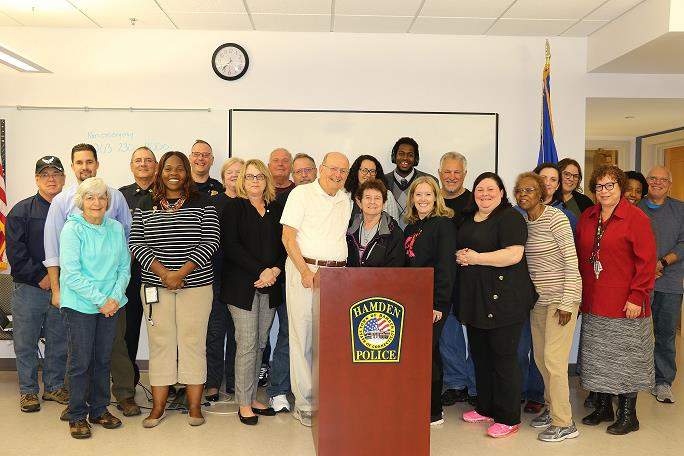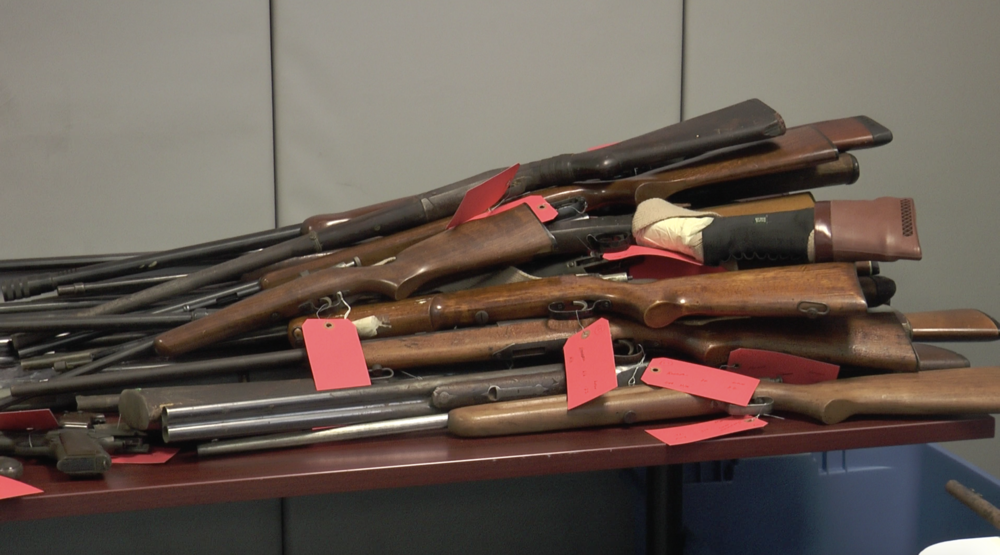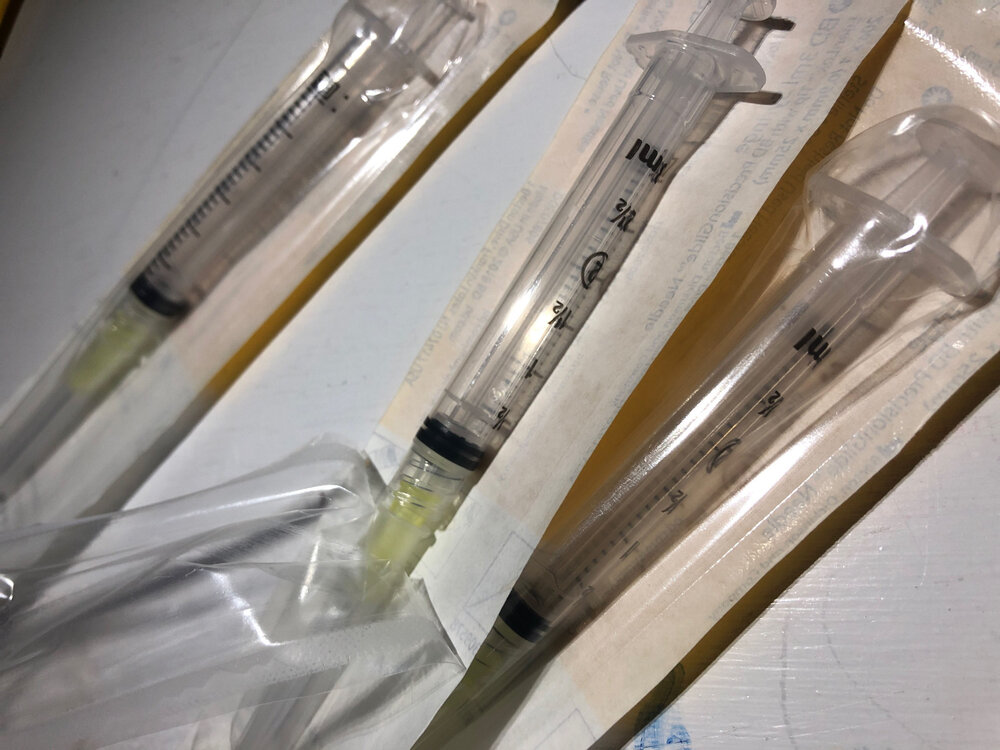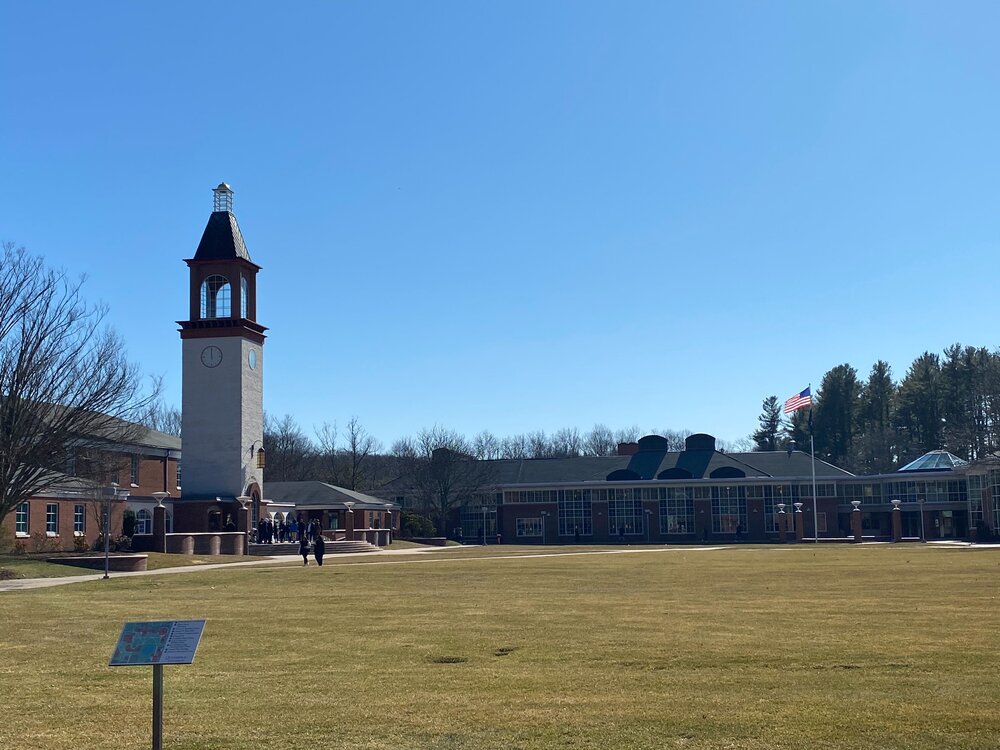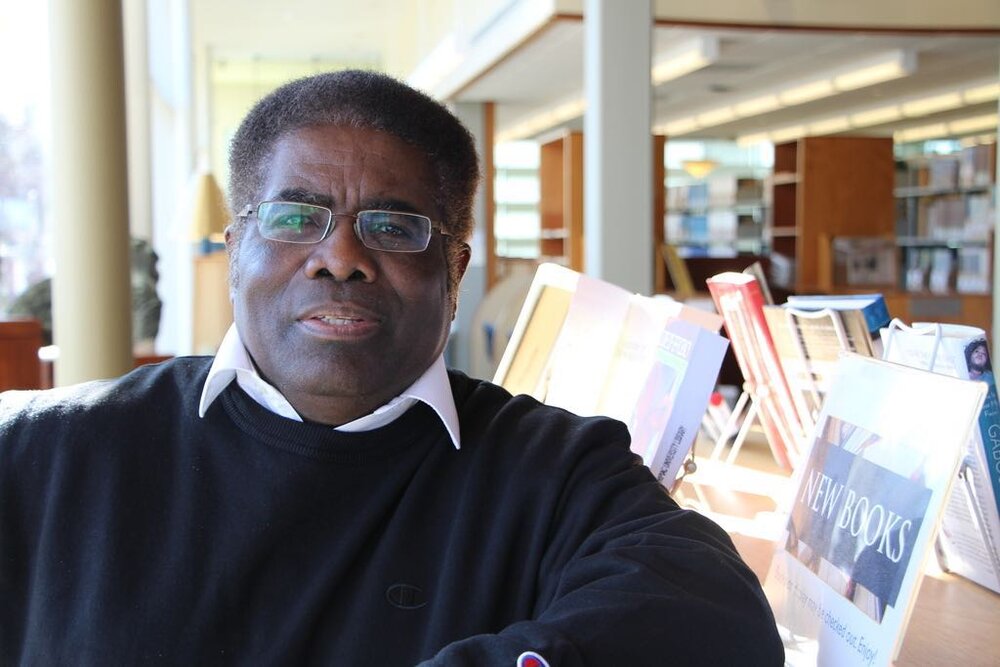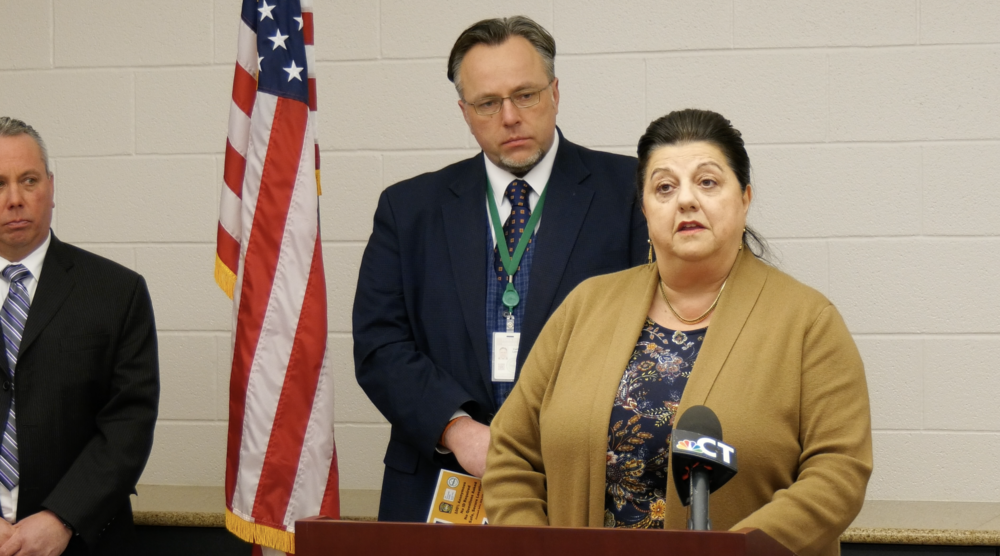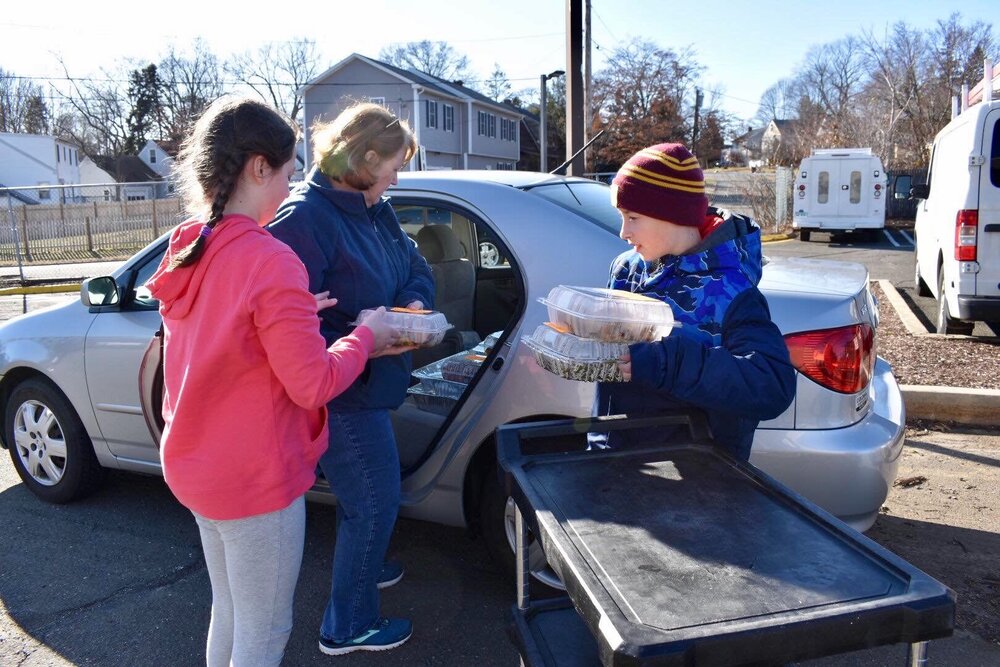
Jodi Franchi of Milford and her two grandchildren aid the effort of Haven Harvest to provide food for those facing food insecurity. Franchi and her grandchildren are picking up food that will be distributed to those in need.
According to the 2015 Statewide Waste Characterization Study, it is estimated that 22.3 percent of Connecticut’s trash consists of food. This means that 519,832 tons of food are thrown away each year.
President Judy Olian and Quinnipiac University are implementing a strategic plan of the universities’ goals for the foreseeable future. Part of the initiative is the creation of the sustainability council. This is a part of the universities’ strategic plan that became public at the end of the 2019 academic year.
Anna Cicciarella, a member of the sustainability council, says that while the university is making progress there is still a lot of work to be done.
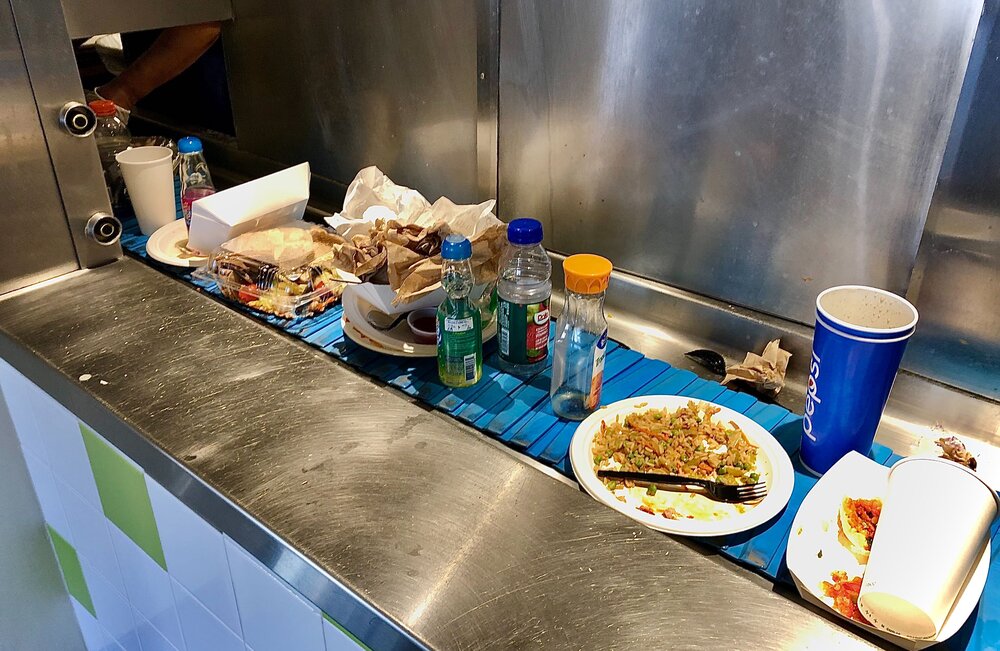
Food waste at Quinnipiac University is to be collected and delivered to the Albert Schweitzer Institute, who will then turn the food waste into material for their compost.
“We’ve had to break down what sustainability means on campus…it’s a broad term,” Ciacciarella said.
The council has primarily focused on three areas of sustainability, living, learning and sustaining. Food waste falls under living. This is one of the areas Ciacciarella has been working on. The university is partnered with Albert Schweitzer Institute, which has started a compost where food waste will be collected.
“We built it in the fall and starting in March we’ll utilize that to take food waste…there’s a worm bin in the building too, but it is a smaller amount,” Ciacciarella said.
The worm bin uses the worms to recycle food scraps and other organic material into a soil called vermicompost, or worm compost. Food scraps are put into the bin which then becomes compost as they pass through the worm’s body. This process creates composts that can be used to grow plants.
“It’s an example of what we can do in the long run,” Ciacciarella said.
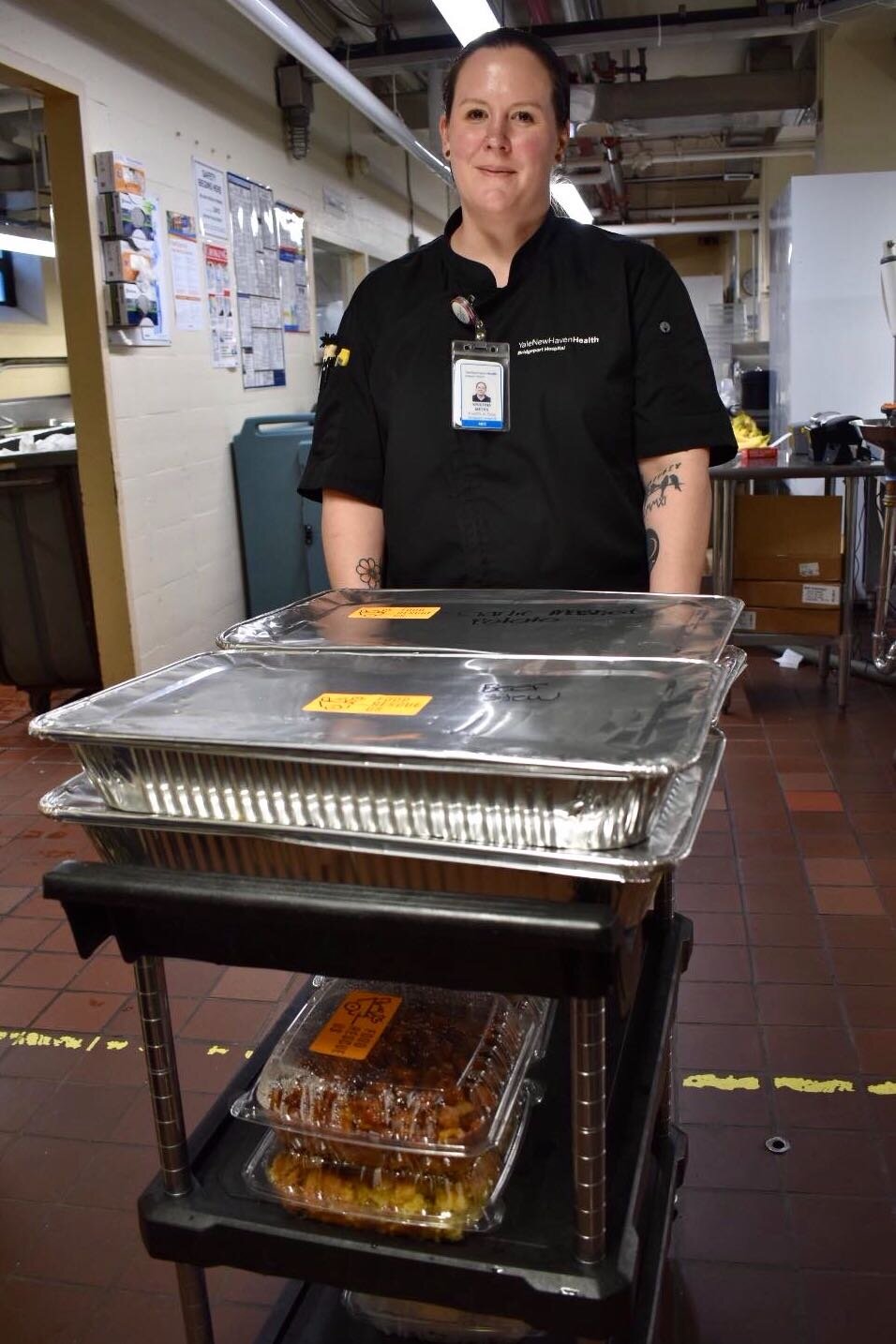
Sam Conti, a Bridgeport hospital dining employee, prepares to take trays of leftover food to be donated.
Quinnipiac Dining, which oversees food services at Quinnipiac, now donates excess food directly to Hamden residents through Haven’s Harvest. Hamden Harvest is a non-profit organization that currently provides food to those facing food insecurity throughout Greater New Haven.
“We launched about a year ago, and we recover as much food as we can,” said founder and director Lori Martin.
Haven’s Harvest currently works with the university to have student volunteers deliver the food throughout Hamden during the academic year.
“When students can volunteer it’s great, we love the support and being backed by the institution,” Martin said.
In a 2019 study commissioned by United Way of Greater New Haven, researchers found that nearly one in eight adults and one in six children in Hamden experience food insecurity.
Beyond the university, Haven’s Harvest collects food from local businesses that otherwise are thrown away. The company has three programs to combat food waste, recovery, advocacy and development.
“There are a lot of businesses in the New Haven area who are interested and we want to help them,” Martin said.
Businesses and community partners that are interested in donating can fill out a form on their website. The website also has a form for anyone or an organization that needs food.
Currently, Haven’s Harvest works with around eighty businesses. These donors give food anywhere from weekly to once a year. The businesses are primarily located in New Haven county.
“It’s so much about the relationships that we make. We are creating a community and the food is just a part of this,” Martin said.
